Kenneth Wu
from Shoreline, WA
Kenneth Wu Phones & Addresses
- Shoreline, WA
- Mountain View, CA
Work
-
Company:Spiracur inc.
-
Address:1180 Bordeaux Dr, Sunnyvale, CA 94089
-
Position:R and d engineer
-
Industries:Commercial Economic, Sociological, and Educational Research
Education
-
School / High School:National Defense Medical College1962
Languages
English
Specialities
Obstetrics & Gynecology
Isbn (Books And Publications)

Prostaglandins in Clinical Medicine: Cardiovascular and Thrombotic Disorders Proceedings of an International Symposium, Prostaglandins in Cardiovascular and Thrombotic Disorders, Chicago, Illinois, M
view sourceAuthor
Kenneth K. Wu
ISBN #
0815196091

Pathophysiology and Management of Thromboembolic Disorders
view sourceAuthor
Kenneth K. Wu
ISBN #
0884164608
Medicine Doctors

Dr. Kenneth C Wu - MD (Doctor of Medicine)
view sourceSpecialties:
Obstetrics & Gynecology
Languages:
English
Education:
Medical School
National Defense Medical College
Graduated: 1962
National Defense Medical College
Graduated: 1962

Kenneth R. Wu
view sourceSpecialties:
Adolescent Medicine, Pediatrics
Work:
Child & Adolescent Clinic
971 11 Ave, Longview, WA 98632
(360)5771771 (phone), (360)4239537 (fax)
971 11 Ave, Longview, WA 98632
(360)5771771 (phone), (360)4239537 (fax)
Education:
Medical School
UMDNJ New Jersey Medical School at Newark
Graduated: 2002
UMDNJ New Jersey Medical School at Newark
Graduated: 2002
Procedures:
Circumcision
Destruction of Benign/Premalignant Skin Lesions
Hearing Evaluation
Psychological and Neuropsychological Tests
Pulmonary Function Tests
Vaccine Administration
Destruction of Benign/Premalignant Skin Lesions
Hearing Evaluation
Psychological and Neuropsychological Tests
Pulmonary Function Tests
Vaccine Administration
Conditions:
Acute Upper Respiratory Tract Infections
Attention Deficit Disorder (ADD)
Bronchial Asthma
Otitis Media
Skin and Subcutaneous Infections
Attention Deficit Disorder (ADD)
Bronchial Asthma
Otitis Media
Skin and Subcutaneous Infections
Languages:
English
Spanish
Spanish
Description:
Dr. Wu graduated from the UMDNJ New Jersey Medical School at Newark in 2002. He works in Longview, WA and specializes in Adolescent Medicine and Pediatrics. Dr. Wu is affiliated with Peacehealth St John Medical Center.

Kenneth D. Wu
view sourceSpecialties:
Physical Medicine & Rehabilitation, Podiatric Medicine
Work:
Marlton Rehabilitation Hospital Physical Medicine & Rehab
92 Brick Rd FL 3, Marlton, NJ 08053
(856)9888778 (phone), (856)9836254 (fax)
92 Brick Rd FL 3, Marlton, NJ 08053
(856)9888778 (phone), (856)9836254 (fax)
Education:
Medical School
Medical College of Pennsylvania
Graduated: 1993
Medical College of Pennsylvania
Graduated: 1993
Languages:
English
Spanish
Spanish
Description:
Dr. Wu graduated from the Medical College of Pennsylvania in 1993. He works in Marlton, NJ and specializes in Physical Medicine & Rehabilitation and Podiatric Medicine. Dr. Wu is affiliated with Marlton Rehabilitation Hospital.

Kenneth Q. Wu
view sourceSpecialties:
Pain Management, Anesthesiology
Work:
Sprintz Center
9303 Pinecroft Dr STE 320, Spring, TX 77380
(713)7141399 (phone), (713)3895798 (fax)
9303 Pinecroft Dr STE 320, Spring, TX 77380
(713)7141399 (phone), (713)3895798 (fax)
Languages:
English
Description:
Dr. Wu works in The Woodlands, TX and specializes in Pain Management and Anesthesiology.

Kenneth K. Wu
view sourceSpecialties:
Hematology/Oncology
Work:
UT PhysiciansUniversity Of Texas Physicians Pediatric Specialists
6410 Fannin St STE 500, Houston, TX 77030
(832)3257111 (phone), (713)5122225 (fax)
6410 Fannin St STE 500, Houston, TX 77030
(832)3257111 (phone), (713)5122225 (fax)
Languages:
English
Spanish
Spanish
Description:
Dr. Wu works in Houston, TX and specializes in Hematology/Oncology. Dr. Wu is affiliated with Memorial Hermann Texas Medical Center and University Of Texas Medical Branch.

Kenneth Qian Wu
view sourceSpecialties:
Anesthesiology
Pain Medicine
Pain Medicine

Kenneth Don Wu
view sourceSpecialties:
Physical Medicine & Rehabilitation
Pain Medicine
Pain Medicine
Education:
Drexel University(1993)
Lawyers & Attorneys

Kenneth Wu - Lawyer
view sourceOffice:
Fidelity Investments
ISLN:
1000460652
Admitted:
2012
University:
Suffolk University Law School
Name / Title
Company / Classification
Phones & Addresses
R And D Engineer
Spiracur Inc.
Commercial Economic, Sociological, and Educat...
Commercial Economic, Sociological, and Educat...
1180 Bordeaux Dr, Sunnyvale, CA 94089
President
NEW ERA REALTY AND FINANCIAL SERVICES
Real Estate Agent/Manager
Real Estate Agent/Manager
1248 Monte Dr, Milpitas, CA 95035
Managing
Kenneth Wu and Associates, LLC
Consulting · Nonclassifiable Establishments
Consulting · Nonclassifiable Establishments
3993 Country Vis Ct, San Jose, CA 95121
Chairman Of Pediatric Services
Peacehealth
General Medical Hospital · Medical Doctor's Office · Medical Clinic · Hospital · Physicians Office · Medical Office · Offices and Clinics of Medical Doctors · Family Medical Practice
General Medical Hospital · Medical Doctor's Office · Medical Clinic · Hospital · Physicians Office · Medical Office · Offices and Clinics of Medical Doctors · Family Medical Practice
(360)4142000, (360)6364943, (360)6364804, (360)4142222
R And D Engineer
Spiracur Inc.
Medical Devices · Commercial Nonphysical Research Mfg Medicinal/Botanical Products · Mfg Surgical/Medical Instruments
Medical Devices · Commercial Nonphysical Research Mfg Medicinal/Botanical Products · Mfg Surgical/Medical Instruments
1180 Bordeaux Dr, Sunnyvale, CA 94089
2761 Fair Oaks Ave, Redwood City, CA 94063
(408)7015300, (650)3641544, (650)7015301
2761 Fair Oaks Ave, Redwood City, CA 94063
(408)7015300, (650)3641544, (650)7015301
Secretary,Director
SUNNYLAND ENTERPRISES, INC
President
HERON INC
1335 Muench Ct, San Jose, CA 95131
President
SRPAGE.ORG
Business Services at Non-Commercial Site
Business Services at Non-Commercial Site
2739 Louis Rd, Palo Alto, CA 94303
Us Patents
-
Closed Incision Negative Pressure Wound Therapy Device And Methods Of Use
view source -
US Patent:8246590, Aug 21, 2012
-
Filed:Oct 10, 2008
-
Appl. No.:12/249759
-
Inventors:Dean Hu - Hayward CA, US
Moshe Pinto - Mountain View CA, US
Kenton Fong - Mountain View CA, US
Akshay Mavani - Los Altos CA, US
Kenneth Wu - San Francisco CA, US -
Assignee:Spiracur, Inc. - Redwood City CA
-
International Classification:A61F 13/00
-
US Classification:604305, 604187, 604192, 604268, 604289, 604290, 604296, 604300, 604304, 604311, 604312, 604313, 604315, 604316, 604318, 604 35, 604 36, 604119
-
Abstract:A surgical tissue therapy device includes a sealant layer and a collection chamber. The sealant layer functions so as to create a sealed enclosure or space between it and the surface of a patient by forming, preferably, an airtight seal around a surgical area of skin trauma. The closed incision tissue therapy device also comprises a collection chamber, which may comprise an elongate tubular chamber with a plurality of longitudinally spaced openings. The collection chamber may be configured to be in fluid communication with the sealant layer and the area of skin trauma and functions as to distribute the negative pressure applied to a surgically closed area of skin trauma. Preferably, the pressure under the sealant layer is reduced by expanding the volume of the enclosure space and thereby decreasing the density of air molecules under the sealant layer. The collection material may comprise a material and/or a configuration that permits length changes based upon the length of the corresponding surgical wound or incision.
-
Reduced Pressure Therapy Of The Sacral Region
view source -
US Patent:8361043, Jan 29, 2013
-
Filed:Jan 7, 2010
-
Appl. No.:12/683987
-
Inventors:Dean Hu - San Leandro CA, US
Kenton Fong - Mountain View CA, US
Moshe Pinto - Mountain View CA, US
Kenneth Wu - San Francisco CA, US
Evan Anderson - Sunnyvale CA, US
Anthony Coxum - San Jose CA, US
Brendan Donohoe - Fairfax CA, US
Philip Hui - Foster City CA, US
Craig McGreevy - Walnut Creek CA, US -
Assignee:Spiracur Inc. - Sunnyvale CA
-
International Classification:A61M 1/00
-
US Classification:604319
-
Abstract:Reduced pressure wound therapy is performed on a sacral region of a patient using an adhesive dressing comprising a flexible planar layer and a non-planar fold-sealing region configured to seal to the intergluteal cleft of a patient. The fold-sealing region is located on an outer edge of the adhesive dressing and comprises a tapered configuration.
-
Methods And Devices For Applying Closed Incision Negative Pressure Wound Therapy
view source -
US Patent:8366693, Feb 5, 2013
-
Filed:Jun 18, 2010
-
Appl. No.:12/818459
-
Inventors:Dean Hu - San Leandro CA, US
Kenton Fong - Mountain View CA, US
Moshe Pinto - Mountain View CA, US
Kenneth Wu - Mountain View CA, US
Craig McGreevy - Walnut Creek CA, US
Brendan Donohoe - Fairfax CA, US -
Assignee:Spiracur, Inc. - Sunnyvale CA
-
International Classification:A61M 1/00
-
US Classification:604319, 604187, 604192, 604268, 604290, 604296, 604300, 604304, 604305, 604311, 604312, 604313, 604315, 604316, 604318, 604 35, 604119
-
Abstract:A surgical tissue therapy device includes a sealant layer and a collection chamber. The sealant layer functions so as to create a sealed enclosure, or space between it and the surface of a patient, by forming an airtight seal around a surgical area of skin trauma. The closed incision tissue therapy device also comprises a collection chamber, which may comprise an elongate tubular chamber with a plurality of longitudinally spaced openings. The collection chamber may be configured to be in fluid communication with the sealant layer and the area of skin trauma and functions as to distribute the negative pressure applied to a surgically closed area of skin trauma. Preferably, the pressure under the sealant layer is reduced by expanding the volume of the enclosure space and thereby decreasing the density of air molecules under the sealant layer. The collection material may comprise a material and/or a configuration that permits length changes based upon the length of the corresponding surgical wound or incision.
-
Methods And Devices For Applying Closed Incision Negative Pressure Wound Therapy
view source -
US Patent:8409159, Apr 2, 2013
-
Filed:Apr 9, 2010
-
Appl. No.:12/757654
-
Inventors:Dean Hu - San Leandro CA, US
Kenton Fong - Mountain View CA, US
Moshe Pinto - Mountain View CA, US
Kenneth Wu - San Francisco CA, US
Craig McGreevy - Walnut Creek CA, US
Brendan Donohoe - Fairfax CA, US -
Assignee:Spiracur, Inc. - Sunnyvale CA
-
International Classification:A61M 1/00
-
US Classification:604319, 604187, 604192, 604268, 604289, 604290, 604296, 604300, 604304, 604305, 604311, 604312, 604313, 604315, 604316, 604318, 604119, 604 35, 604 36
-
Abstract:A surgical tissue therapy device includes a sealant layer and a collection chamber. The sealant layer functions so as to create a sealed enclosure, or space between it and the surface of a patient, by forming an airtight seal around a surgical area of skin trauma. The closed incision tissue therapy device also comprises a collection chamber, which may comprise an elongate tubular chamber with a plurality of longitudinally spaced openings. The collection chamber may be configured to be in fluid communication with the sealant layer and the area of skin trauma and functions as to distribute the negative pressure applied to a surgically closed area of skin trauma. Preferably, the pressure under the sealant layer is reduced by expanding the volume of the enclosure space and thereby decreasing the density of air molecules under the sealant layer. The collection material may comprise a material and/or a configuration that permits length changes based upon the length of the corresponding surgical wound or incision.
-
Closed Incision Negative Pressure Wound Therapy Device And Methods Of Use
view source -
US Patent:8435221, May 7, 2013
-
Filed:Jun 18, 2010
-
Appl. No.:12/818414
-
Inventors:Dean Hu - Hayward CA, US
Moshe Pinto - Mountain View CA, US
Kenton Fong - Mountain View CA, US
Akshay Mavani - Los Altos CA, US
Kenneth Wu - San Francisco CA, US -
Assignee:Spiracur, Inc. - Sunnyvale CA
-
International Classification:A61F 13/00
-
US Classification:604305, 604187, 604192, 604268, 604289, 604290, 604296, 604300, 604304, 604311, 604312, 604313, 604315, 604316, 604318, 604119, 604 35, 604 36
-
Abstract:A surgical tissue therapy device includes a sealant layer and a collection chamber. The sealant layer functions so as to create a sealed enclosure or space between it and the surface of a patient by forming, preferably, an airtight seal around a surgical area of skin trauma. The closed incision tissue therapy device also comprises a collection chamber, which may comprise an elongate tubular chamber with a plurality of longitudinally spaced openings. The collection chamber may be configured to be in fluid communication with the sealant layer and the area of skin trauma and functions as to distribute the negative pressure applied to a surgically closed area of skin trauma. Preferably, the pressure under the sealant layer is reduced by expanding the volume of the enclosure space and thereby decreasing the density of air molecules under the sealant layer. The collection material may comprise a material and/or a configuration that permits length changes based upon the length of the corresponding surgical wound or incision.
-
Closed Incision Negative Pressure Wound Therapy Device And Methods Of Use
view source -
US Patent:8562576, Oct 22, 2013
-
Filed:Jan 11, 2011
-
Appl. No.:13/004819
-
Inventors:Dean Hu - San Leandro CA, US
Moshe Pinto - Mountain View CA, US
Kenton Fong - Mountain View CA, US
Akshay Mavani - Los Altos CA, US
Kenneth Wu - San Francisco CA, US -
Assignee:Spiracur, Inc. - Sunnyvale CA
-
International Classification:A61F 13/00
-
US Classification:604305, 604187, 604192, 604368, 604290, 604296, 604300, 604304, 604311, 604312, 604313, 604315, 604316, 604318
-
Abstract:A surgical tissue therapy device includes a sealant layer and a collection chamber. The sealant layer functions so as to create a sealed enclosure or space between it and the surface of a patient by forming, preferably, an airtight seal around a surgical area of skin trauma. The closed incision tissue therapy device also comprises a collection chamber, which may comprise an elongate tubular chamber with a plurality of longitudinally spaced openings. The collection chamber may be configured to be in fluid communication with the sealant layer and the area of skin trauma and functions as to distribute the negative pressure applied to a surgically closed area of skin trauma. Preferably, the pressure under the sealant layer is reduced by expanding the volume of the enclosure space and thereby decreasing the density of air molecules under the sealant layer. The collection material may comprise a material and/or a configuration that permits length changes based upon the length of the corresponding surgical wound or incision.
-
Device For Delivery Of Reduced Pressure To Body Surfaces
view source -
US Patent:20100137775, Jun 3, 2010
-
Filed:Nov 25, 2009
-
Appl. No.:12/626426
-
Inventors:Dean HU - San Leandro CA, US
Kenton Fong - Mountain View CA, US
Moshe Pinto - Mountain View CA, US
Philip Hui - Boston MA, US
Kenneth Wu - San Francisco CA, US
Craig McGreevy - Walnut Creek CA, US
Evan Anderson - San Francisco CA, US -
Assignee:Spiracur Inc. - Sunnyvale CA
-
International Classification:A61F 13/02
A61M 1/00 -
US Classification:602 54, 604319
-
Abstract:Disclosed herein is a device which is intended to deliver and maintain reduced pressure to body surfaces for application of reduced pressure wound therapy (RPWT) also known as negative pressure wound therapy (NPWT). During application of this type of therapy, a substantially airtight seal is formed around a section of tissue to be treated. This seal is formed by a dressing which provides fluid communication from a section of tissue to a reduced pressure source. Disclosed herein is a dressing system which is configured to enhance usability and functionality of this dressing. First, the system may be configured to allow full rotation of the fluid communication conduit to the reduced pressure source along the axis substantially normal to the dressing. Second, the system may be configured to include a one-way valve to prevent backflow of any drainage fluids. Third, the system may be configured with transparent windows covered by opaque flaps to allow inspection through the dressing. Fourth, the system may be configured to include an indicator which visually makes clear whether reduced pressure is being applied or not. Fifth, the system is configured to minimize the profile of the dressing system.
-
Device For Delivery Of Reduced Pressure To Body Surfaces
view source -
US Patent:20100160901, Jun 24, 2010
-
Filed:Dec 23, 2009
-
Appl. No.:12/646856
-
Inventors:Dean HU - San Leandro CA, US
Kenton Fong - Mountain View CA, US
Moshe Pinto - Mountain View CA, US
Philip Hui - Boston MA, US
Kenneth Wu - San Francisco CA, US
Craig McGreevy - Walnut Creek CA, US
Evan Anderson - San Francisco CA, US -
International Classification:A61M 27/00
-
US Classification:604543
-
Abstract:Disclosed herein is a device which is intended to deliver and maintain reduced pressure to body surfaces for application of reduced pressure wound therapy (RPWT) also known as negative pressure wound therapy (NPWT). During application of this type of therapy, a substantially airtight seal is formed around a section of tissue to be treated. This seal is formed by a dressing which provides fluid communication from a section of tissue to a reduced pressure source. Disclosed herein is a dressing system which is configured to enhance usability and functionality of this dressing. First, the system may be configured to allow full rotation of the fluid communication conduit to the reduced pressure source along the axis substantially normal to the dressing. Second, the system may be configured to include a one-way valve to prevent backflow of any drainage fluids. Third, the system may be configured with transparent windows covered by opaque flaps to allow inspection through the dressing. Fourth, the system may be configured to include an indicator which visually makes clear whether reduced pressure is being applied or not. Fifth, the system is configured to minimize the profile of the dressing system.
Resumes

Engineer
view sourceLocation:
Renton, WA
Industry:
Mechanical Or Industrial Engineering
Work:
Uniram
Mechanical Designer
Onecad Solutions Ltd. Jul 2010 - Nov 2011
Mechanical Designer
Anchor Danly 2008 - 2009
Mechanical Engineering
Able O Rings and Seals 2006 - 2008
Draftsman and Engineering
Def Sealing Solutions 2003 - 2006
Senior Mechanical Engineer
Mechanical Designer
Onecad Solutions Ltd. Jul 2010 - Nov 2011
Mechanical Designer
Anchor Danly 2008 - 2009
Mechanical Engineering
Able O Rings and Seals 2006 - 2008
Draftsman and Engineering
Def Sealing Solutions 2003 - 2006
Senior Mechanical Engineer
Education:
Hunan University 1986 - 1990
Bachelors, Mechanical Engineering
Bachelors, Mechanical Engineering

Kenneth Wu
view source
Kenneth Wu
view source
Kenneth Wu
view sourceLocation:
United States
Myspace
Youtube

Kenneth Wu
view source
KenNeth Wu
view source
Kenneth Wu
view source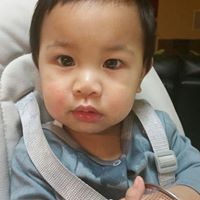
Kenneth Wu
view source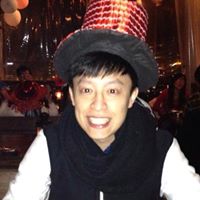
Kenneth Wu
view source
Kenneth Wu
view source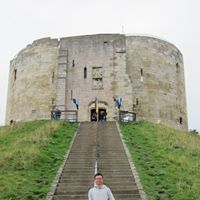
Kenneth Wu
view source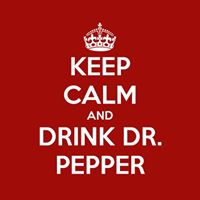
Kenneth Wu
view sourceGoogleplus

Kenneth Wu
About:
Taiwanese-American | UTokyo eeis D1 | MIT Course 6 | La Jolla | fiber optic comm & sig proc | 無双 | surfing | piano rock | human rights | 日本語 | lingua Latina
Tagline:
Abstract expressionism for the win!

Kenneth Wu

Kenneth Wu

Kenneth Wu
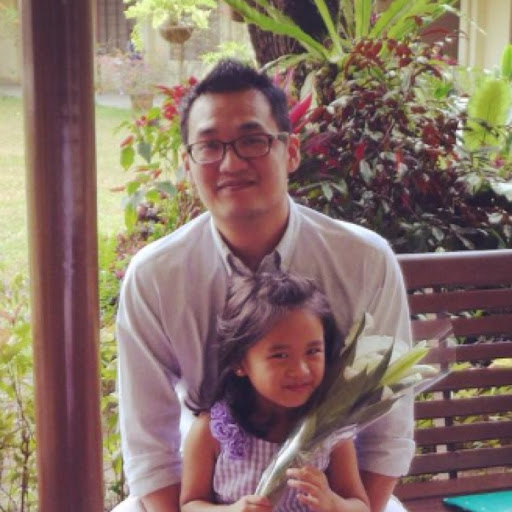
Kenneth Wu

Kenneth Wu
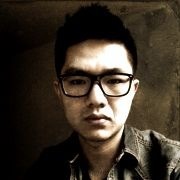
Kenneth Wu

Kenneth Wu
Classmates

Kenneth Wu
view sourceSchools:
Frank Ryan School Nepean Morocco 1988-1990, St. Pius X High School Nepean Morocco 1990-1995

St. Pius X High School, N...
view sourceGraduates:
Laura Hach (1990-1995),
Valerie Mcdonald (1998-1999),
Katie Cowie (1998-1999),
Kenneth Wu (1990-1995),
Princess Laya (1989-1996)
Valerie Mcdonald (1998-1999),
Katie Cowie (1998-1999),
Kenneth Wu (1990-1995),
Princess Laya (1989-1996)

Frank Ryan School, Nepean...
view sourceGraduates:
Kenneth Wu (1988-1990),
Jennifer Hyland (1988-1988),
Marlene Sloan (1987-1989),
Karen Overvelde (1986-1988)
Jennifer Hyland (1988-1988),
Marlene Sloan (1987-1989),
Karen Overvelde (1986-1988)

Massachusetts Institute o...
view sourceGraduates:
Kenneth Schiciano (1987-1989),
Kenneth Wu (1995-1997)
Kenneth Wu (1995-1997)

Mount Sinai School of Med...
view sourceGraduates:
Linda Kanarvogel (1986-1990),
Daniel Brook (1975-1979),
David Durham (1975-1979),
Jack Berdy (1991-1993),
Kenneth Wu (1997-2005)
Daniel Brook (1975-1979),
David Durham (1975-1979),
Jack Berdy (1991-1993),
Kenneth Wu (1997-2005)

Massachusetts Institute o...
view sourceGraduates:
Kenneth Wu (1991-1995),
Lawrence McCann (1979-1983),
Matthew Vokoun (2003-2005),
Rohit Prasankumar (1997-2003),
Daniel Wolfson (1952-1956)
Lawrence McCann (1979-1983),
Matthew Vokoun (2003-2005),
Rohit Prasankumar (1997-2003),
Daniel Wolfson (1952-1956)

Steveston High School, Ri...
view sourceGraduates:
Ken Wu (1995-1999),
Elaine Murao (1980-1984),
Dan Armstrong (1982-1986),
Anthony Scott (1969-1973)
Elaine Murao (1980-1984),
Dan Armstrong (1982-1986),
Anthony Scott (1969-1973)
Get Report for Kenneth Wu from Shoreline, WA











